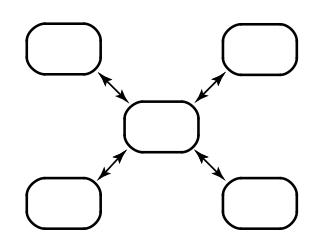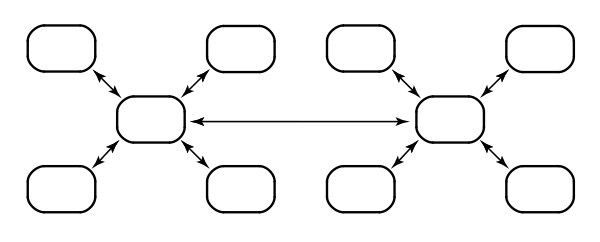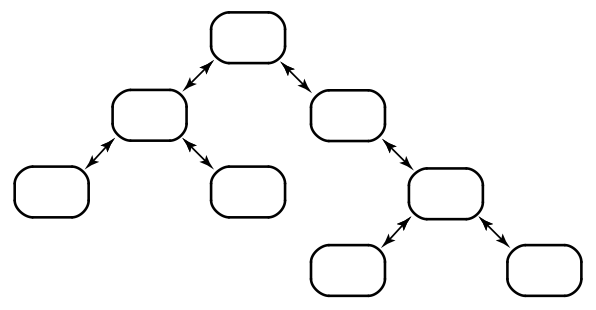One-to-many synchronization
The one-to-many pattern involves one replica, or root site sending
packets to all other replicas in the family.
In the hub patterns (Figure 1 and Figure 2), the hub replicas exchange packets with all spoke replicas. In the tree pattern (Figure 3), the root replicas exchange packets with branch replicas.
Figure 1. Single-hub synchronization
pattern 

Figure 2. Multiple-hub synchronization
pattern

Figure 3. Tree synchronization
pattern 

Advantages:
- More efficient for the spoke and branch replicas, which send to and receive from only one other replica.
Disadvantages:
- If the hub or root site goes down, all spoke or branch sites must reconfigure their pattern to continue communication.
- If you change the synchronization pattern so that replicas that did not synchronize directly now exchange packets, the first packets that are generated may be too large for the system.